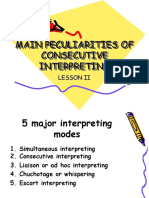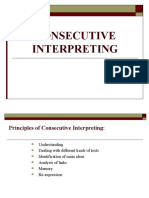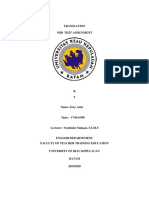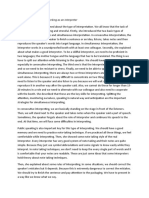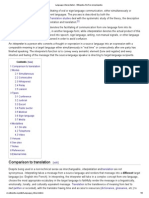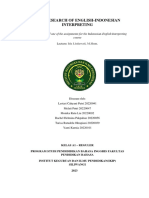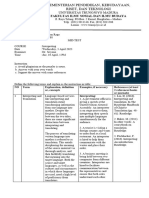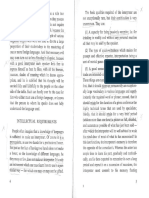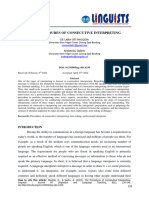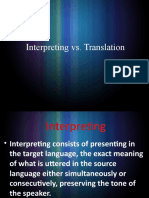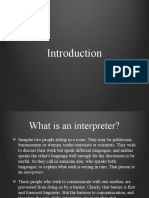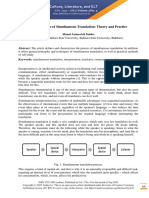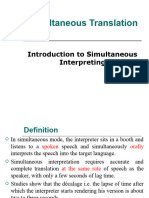0% found this document useful (0 votes)
13 views2 pagesInterpreting Final
The document discusses interpreting theory, highlighting the distinction between interpreters and translators, with a focus on consecutive interpreting. It outlines the process of note-taking as a crucial part of consecutive interpreting and lists essential skills required for effective interpretation. Additionally, it emphasizes the importance of developing and revisiting symbols used in the interpreting process.
Uploaded by
asmawijayahatuwe22Copyright
© © All Rights Reserved
We take content rights seriously. If you suspect this is your content, claim it here.
Available Formats
Download as DOC, PDF, TXT or read online on Scribd
0% found this document useful (0 votes)
13 views2 pagesInterpreting Final
The document discusses interpreting theory, highlighting the distinction between interpreters and translators, with a focus on consecutive interpreting. It outlines the process of note-taking as a crucial part of consecutive interpreting and lists essential skills required for effective interpretation. Additionally, it emphasizes the importance of developing and revisiting symbols used in the interpreting process.
Uploaded by
asmawijayahatuwe22Copyright
© © All Rights Reserved
We take content rights seriously. If you suspect this is your content, claim it here.
Available Formats
Download as DOC, PDF, TXT or read online on Scribd
/ 2

